Abstract
The effect of pectic oligomers and 1-aminocyclopropane carboxylic acid on ethylene biosynthesis and color change was studied in ripening tomato pericarp discs excised from mature-green tomato fruit (Lycopersicon esculentum Mill.). Pectic oligomers induced at least four distinct responses when added to pericarp discs: (a) a short-term, transient increase in ethylene biosynthesis; (b) a long-term, persistent increase in climacteric ethylene in discs excised from mature-green fruit; (c) an advance in ripening processes, as indicated by increased reddening of the disc surfaces; and (d) a darkening of the treated endocarp surface. Pectic oligomers appear to affect the ripening of exocarp and endocarp tissues by different mechanisms. In exocarp tissues, the acceleration of reddening by pectic oligomers might simply be a consequence of induced ethylene biosynthesis. In endocarp tissues, the acceleration of reddening appears to be a direct effect of oligomers on ripening processes. We suggest that the rate of ripening of endocarp tissues may be regulated, in part, by the release of pectic oligomers from the cell walls of adjacent exocarp tissues. Exocarp and endocarp tissues of pericarp discs appear to differ in their sensitivity to ethylene at each maturity stage, and to exhibit independent changes in sensitivity to ethylene as ripening progresses. The tissue-specific pattern of reddening in tomato pericarp may result from this differential sensitivity to endogenous ethylene concentrations.
Full text
PDF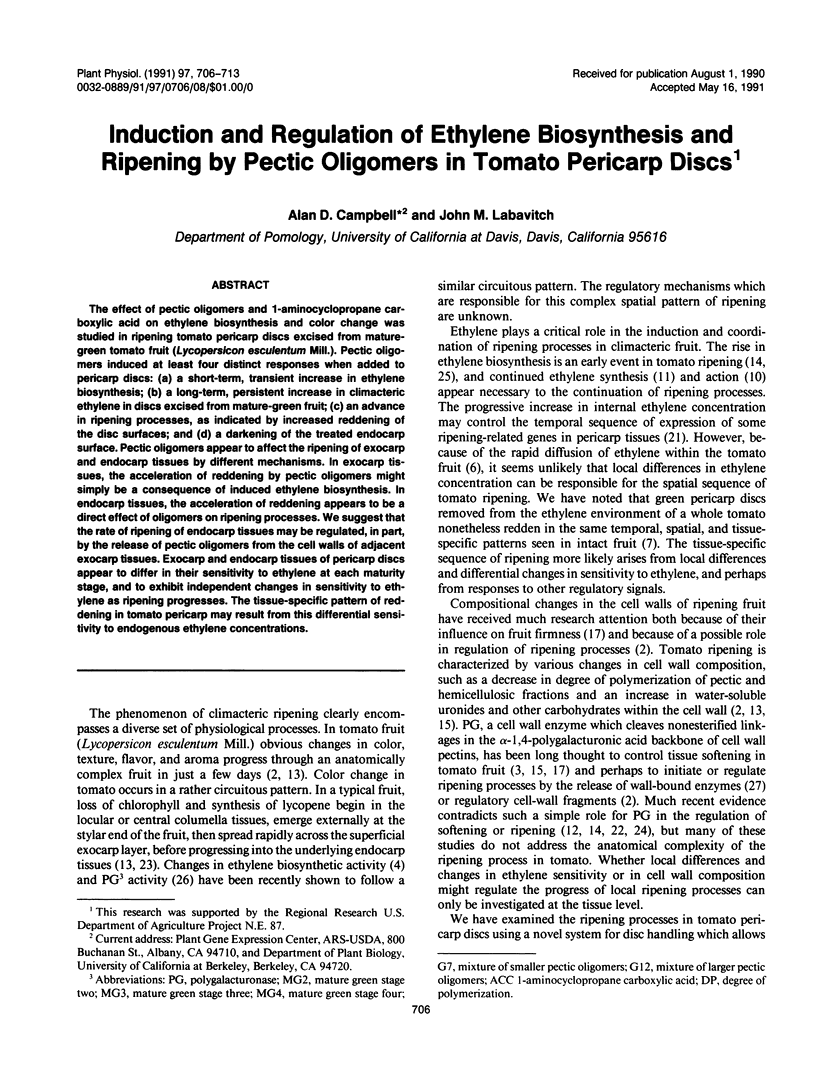
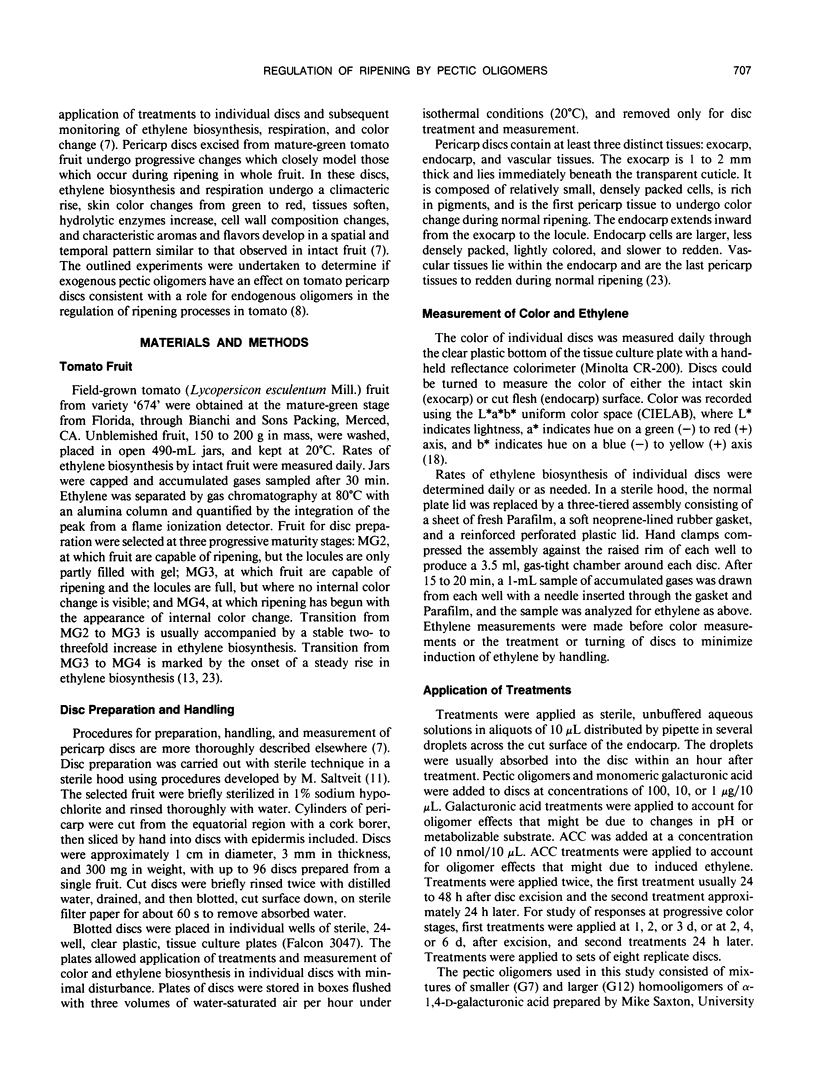
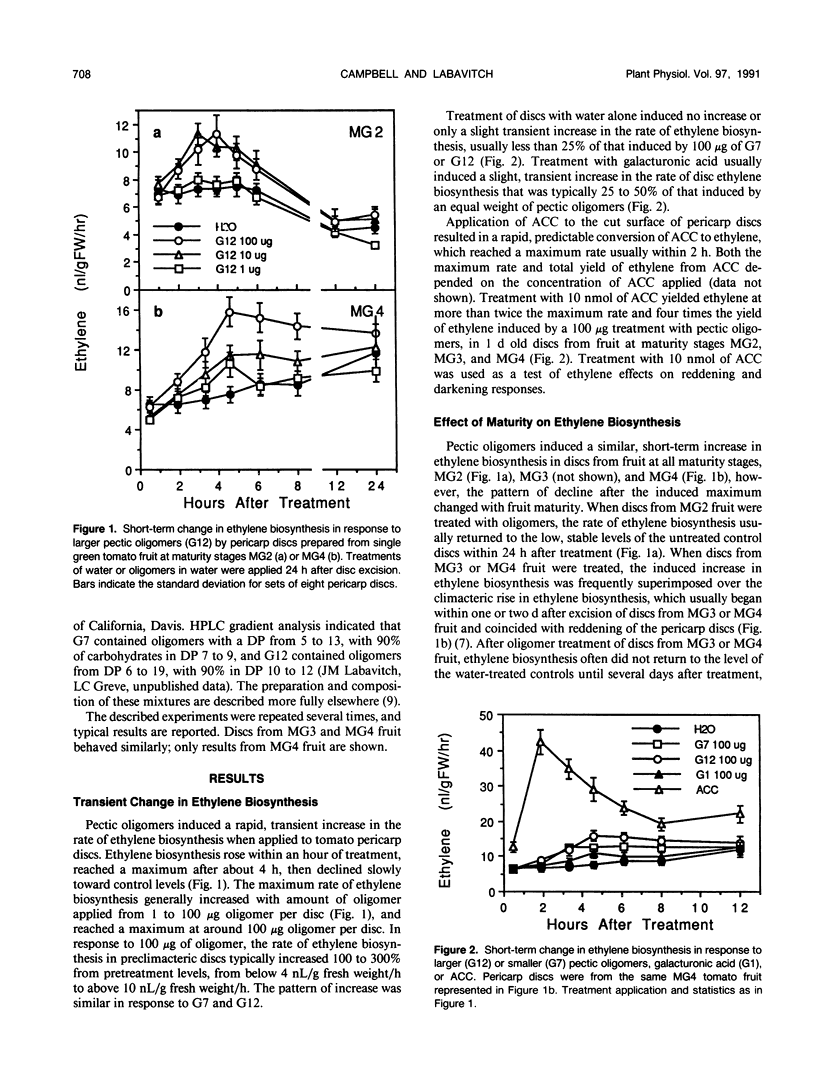
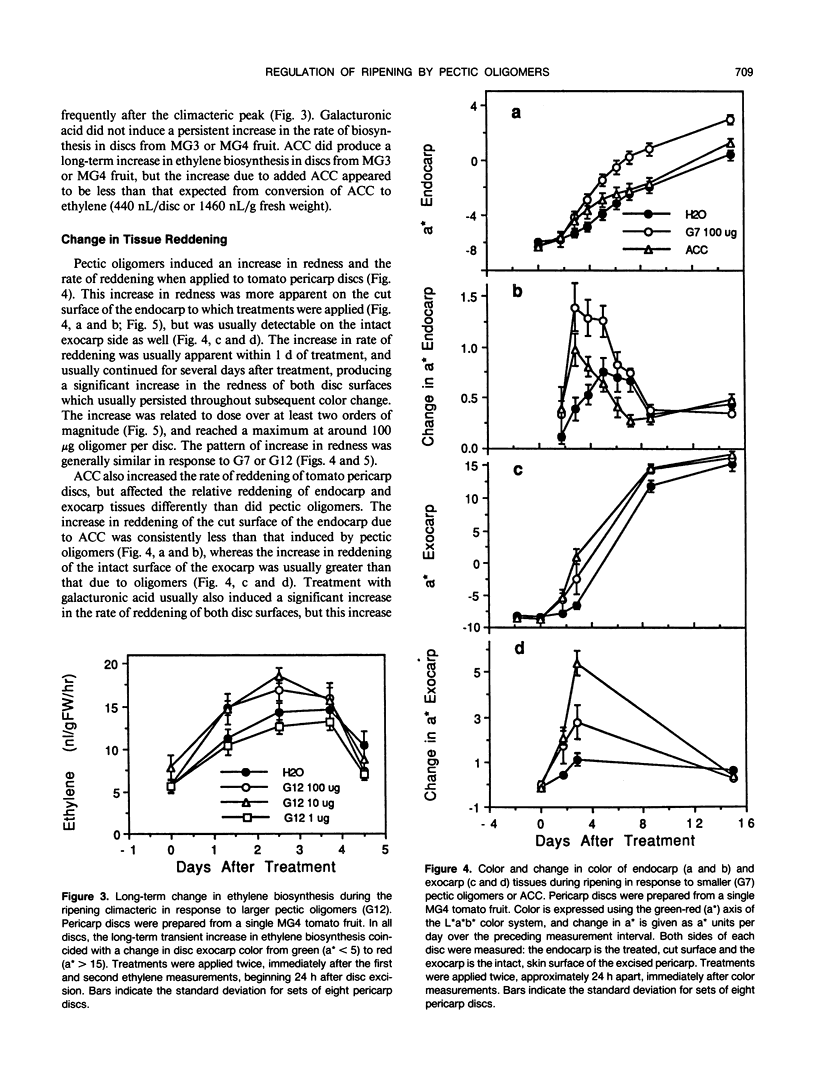
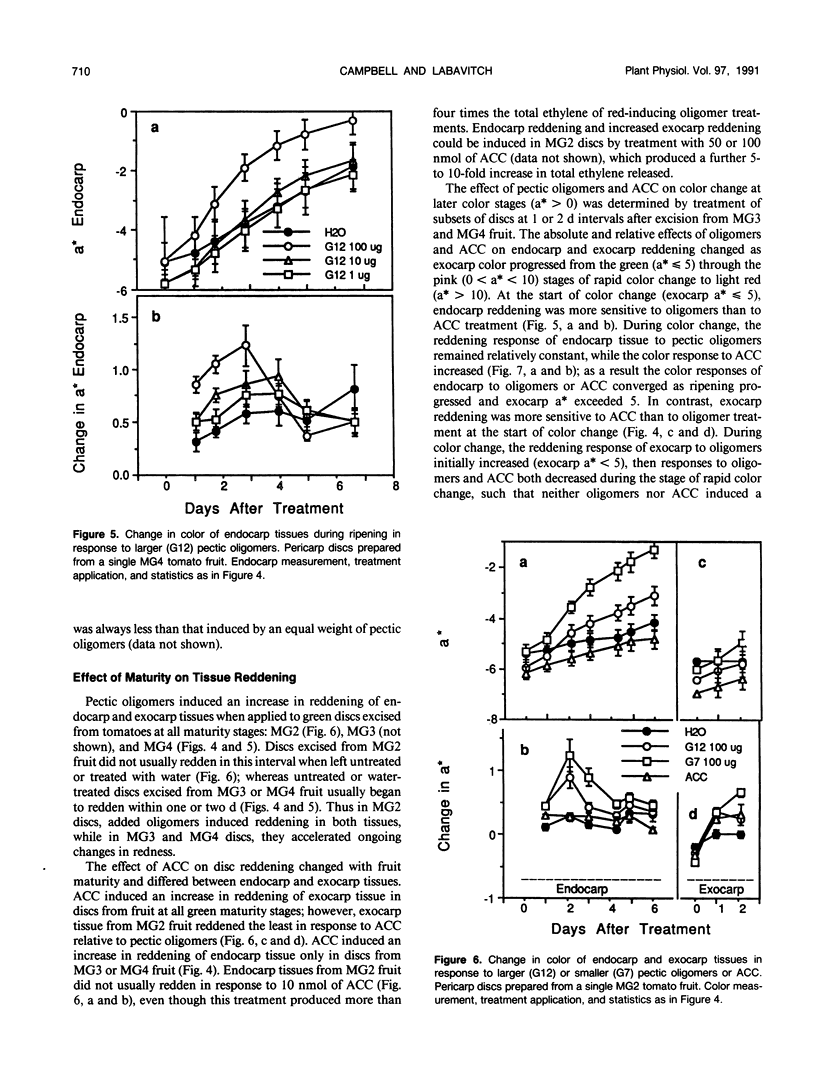
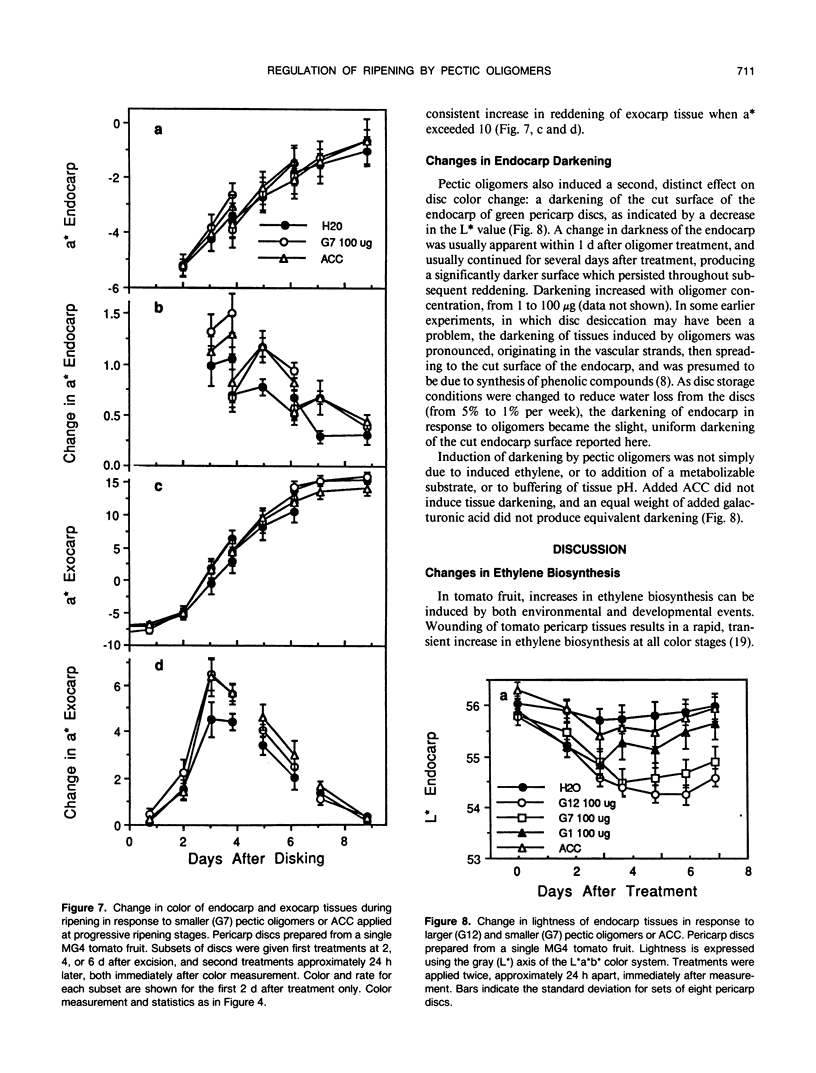
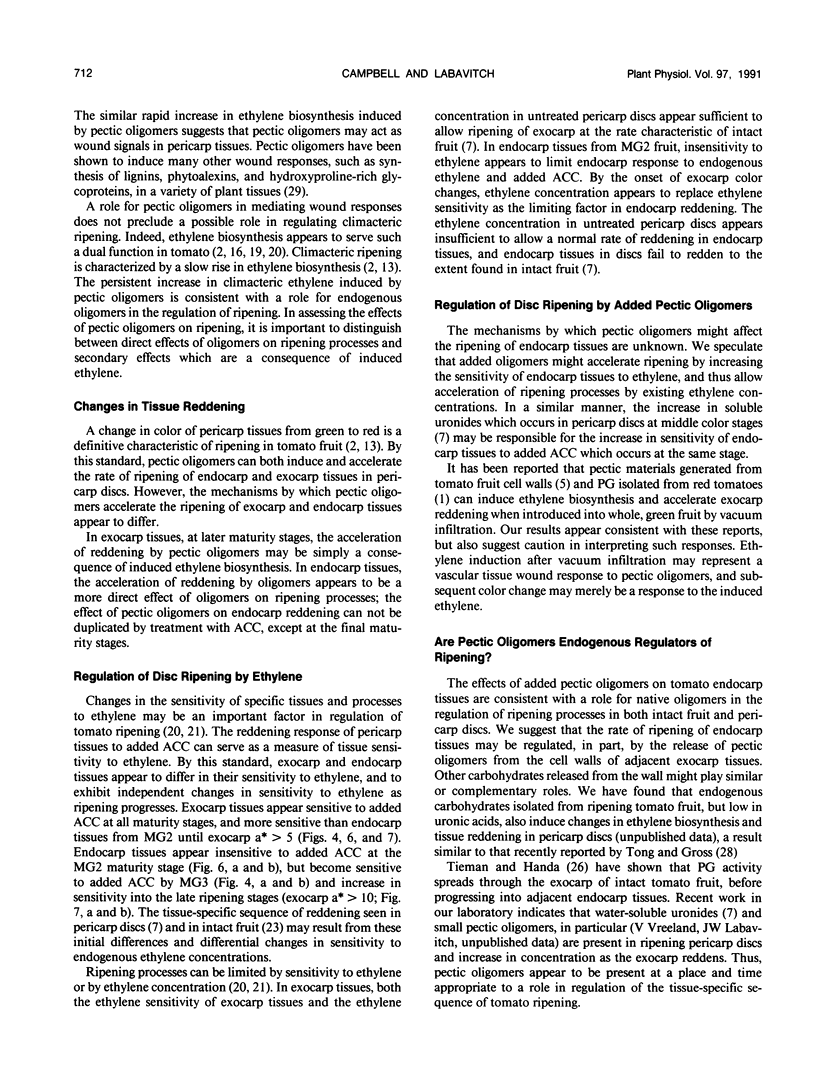
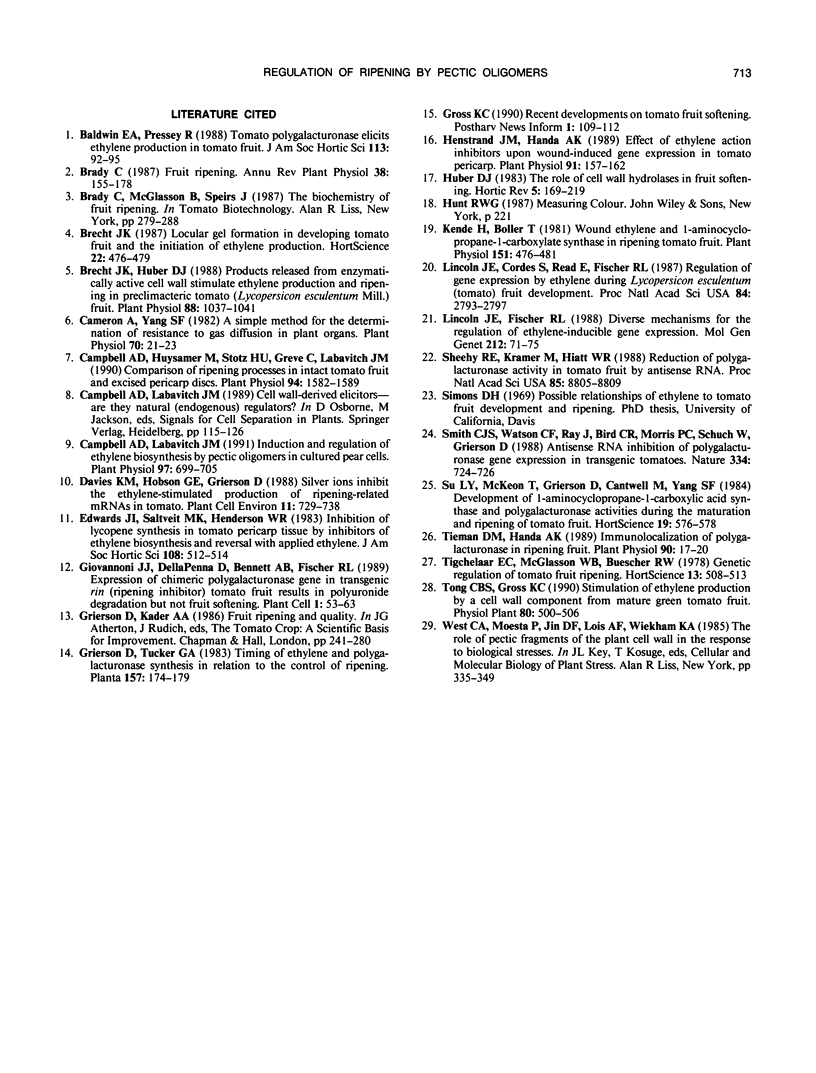
Selected References
These references are in PubMed. This may not be the complete list of references from this article.
- Brecht J. K., Huber D. J. Products Released from Enzymically Active Cell Wall Stimulate Ethylene Production and Ripening in Preclimacteric Tomato (Lycopersicon esculentum Mill.) Fruit. Plant Physiol. 1988 Dec;88(4):1037–1041. doi: 10.1104/pp.88.4.1037. [DOI] [PMC free article] [PubMed] [Google Scholar]
- Cameron A. C., Yang S. F. A simple method for the determination of resistance to gas diffusion in plant organs. Plant Physiol. 1982 Jul;70(1):21–23. doi: 10.1104/pp.70.1.21. [DOI] [PMC free article] [PubMed] [Google Scholar]
- Campbell A. D., Huysamer M., Stotz H. U., Greve L. C., Labavitch J. M. Comparison of ripening processes in intact tomato fruit and excised pericarp discs. Plant Physiol. 1990 Dec;94(4):1582–1589. doi: 10.1104/pp.94.4.1582. [DOI] [PMC free article] [PubMed] [Google Scholar]
- Campbell A. D., Labavitch J. M. Induction and regulation of ethylene biosynthesis by pectic oligomers in cultured pear cells. Plant Physiol. 1991 Oct;97(2):699–705. doi: 10.1104/pp.97.2.699. [DOI] [PMC free article] [PubMed] [Google Scholar]
- Giovannoni J. J., DellaPenna D., Bennett A. B., Fischer R. L. Expression of a chimeric polygalacturonase gene in transgenic rin (ripening inhibitor) tomato fruit results in polyuronide degradation but not fruit softening. Plant Cell. 1989 Jan;1(1):53–63. doi: 10.1105/tpc.1.1.53. [DOI] [PMC free article] [PubMed] [Google Scholar]
- Henstrand J. M., Handa A. K. Effect of Ethylene Action Inhibitors upon Wound-Induced Gene Expression in Tomato Pericarp. Plant Physiol. 1989 Sep;91(1):157–162. doi: 10.1104/pp.91.1.157. [DOI] [PMC free article] [PubMed] [Google Scholar]
- Lincoln J. E., Cordes S., Read E., Fischer R. L. Regulation of gene expression by ethylene during Lycopersicon esculentum (tomato) fruit development. Proc Natl Acad Sci U S A. 1987 May;84(9):2793–2797. doi: 10.1073/pnas.84.9.2793. [DOI] [PMC free article] [PubMed] [Google Scholar]
- Lincoln J. E., Fischer R. L. Diverse mechanisms for the regulation of ethylene-inducible gene expression. Mol Gen Genet. 1988 Apr;212(1):71–75. doi: 10.1007/BF00322446. [DOI] [PubMed] [Google Scholar]
- Sheehy R. E., Kramer M., Hiatt W. R. Reduction of polygalacturonase activity in tomato fruit by antisense RNA. Proc Natl Acad Sci U S A. 1988 Dec;85(23):8805–8809. doi: 10.1073/pnas.85.23.8805. [DOI] [PMC free article] [PubMed] [Google Scholar]
- Tieman D. M., Handa A. K. Immunocytolocalization of polygalacturonase in ripening tomato fruit. Plant Physiol. 1989 May;90(1):17–20. doi: 10.1104/pp.90.1.17. [DOI] [PMC free article] [PubMed] [Google Scholar]


